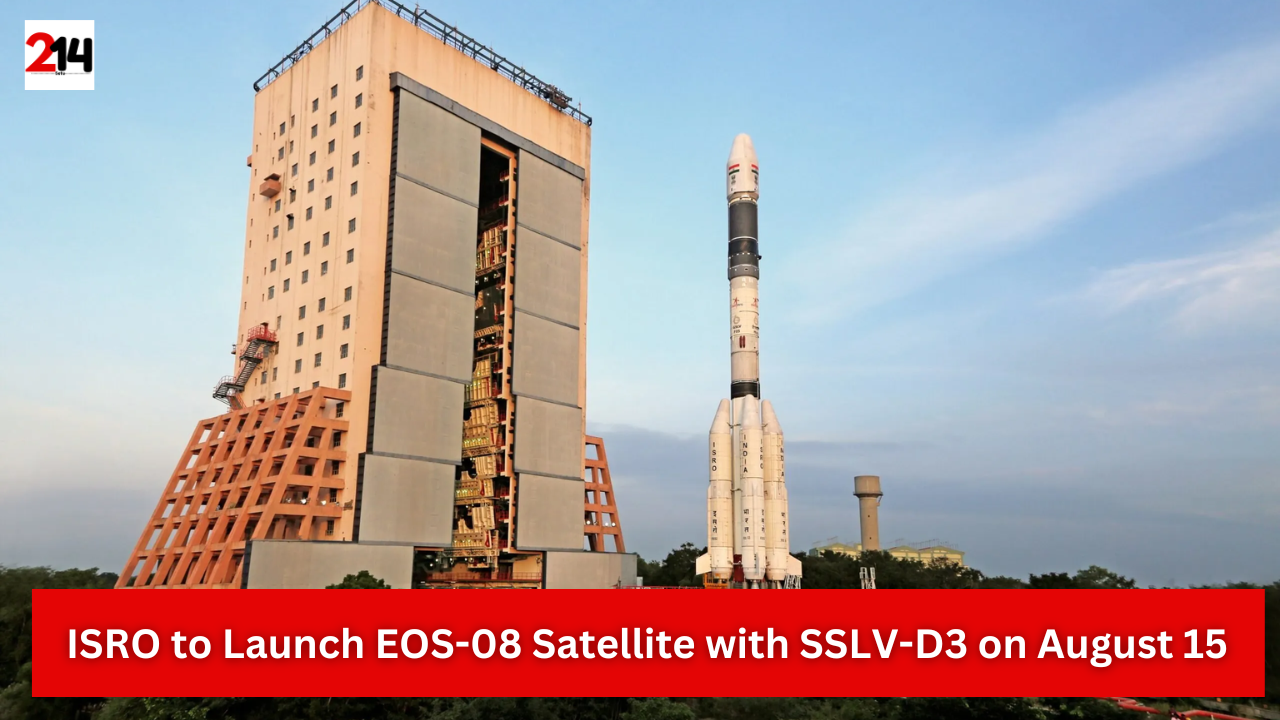
The Indian Space Research Organisation (ISRO) is preparing for a significant milestone with the launch of the Earth Observation Satellite-08 (EOS-08) on August 15, 2024. The satellite will be carried into space by the Small Satellite Launch Vehicle (SSLV-D3) from the Satish Dhawan Space Centre in Sriharikota, Andhra Pradesh. The launch is scheduled for 9:17 AM.
Mission Objectives
The primary objectives of the EOS-08 mission include:
- Environmental Monitoring: Enhancing the capabilities to monitor environmental changes, such as winds, humidity, and the cryosphere, particularly over the Himalayan region and ocean surfaces.
- Disaster Management: Providing crucial data for disaster management, including flood detection and monitoring.
- Support for Gaganyaan Mission: Contributing to the Gaganyaan mission by monitoring ultraviolet (UV) irradiance and providing gamma radiation alarms to ensure astronaut safety.
Satellite Specifications
EOS-08 is a microsatellite weighing approximately 175.5 kg. It is designed to operate in a Circular Low Earth Orbit (LEO) at an altitude of 475 km with an inclination of 37.4°. The satellite has a mission life of one year and is capable of generating around 420 W of power.
Payload Details
EOS-08 carries three primary payloads, each serving a unique purpose:
Electro Optical Infrared (EOIR) Payload:
- Function: Captures images in both Mid-Wave Infrared (MIR) and Long-Wave Infrared (LWIR) bands.
- Applications: Used for satellite-based surveillance, disaster monitoring, environmental observation, fire detection, volcanic activity observation, and industrial disaster assessment.
Global Navigation Satellite System-Reflectometry (GNSS-R) Payload:
- Function: Utilizes GNSS-R-based remote sensing technology.
- Applications: Analyzes ocean surface winds, assesses soil moisture, studies the cryosphere over the Himalayas, detects floods, and monitors inland water bodies.
SiC UV Dosimeter:
- Function: Monitors UV irradiance and serves as a high-dose alarm sensor for gamma radiation.
- Applications: Ensures the safety of astronauts by monitoring radiation levels, particularly for the Gaganyaan mission.
Significance of the Launch
This launch marks the third and final developmental flight of the SSLV, completing the SSLV Development Project. It will enable operational missions by Indian industry and the public sector, including NewSpace India Ltd (NSIL). The mission underscores ISRO’s commitment to advancing satellite technology and enhancing capabilities in environmental monitoring and disaster management.
The EOS-08 satellite’s advanced payloads and integrated systems highlight ISRO’s innovative approach to space technology, promising significant contributions to both scientific research and practical applications.
Stay tuned for updates on this important launch and its contributions to our understanding of environmental dynamics and disaster management.

